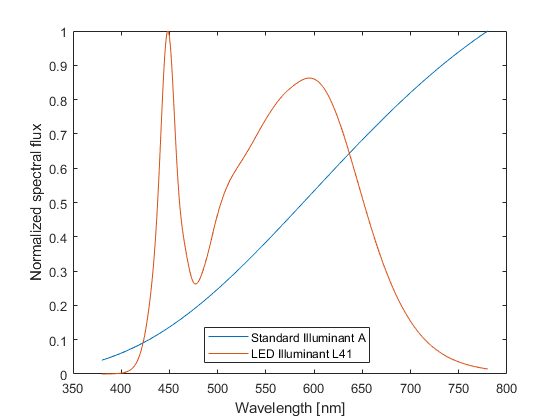RevStdLED (2020-2023)
Leading the LED Revolution: EMPIR Project RevStdLED
In the dynamic landscape of lighting technology, the Metrology Research Institute is at the forefront of innovation, actively participating in the European Metrology Programme for Innovation and Research (EMPIR) Project RevStdLED. This projects seeked to revise and extend measurement methods for LED lamps, luminaires, and modules—a timely response to the surge of LED sources in lighting solutions.
Project Insight
As LED sources ascend to the status of the preferred light source technology in both consumer and industrial applications, a disparity has arosen. The prevailing measurement methods and analyses were grounded in classical tungsten filament lamps, resulting in spectral mismatch errors when assessing LED-based sources. The distinct spectral profiles of LEDs, showcased in Figure 1, underscored the need for transformative change. The core objective of EMPIR's RevStdLED project was to revamp existing measurement methods and analyses, aligning them with the shift in lighting technology.
Our Pioneering Role
Within this initiative, the Metrology Research Institute contributed in two significant areas:
-
Revision of Photometer Mismatch Index f1': As LED-based illumination gains prominence, the calculation of photometer mismatch index f1' demands reevaluation. Our efforts centered on revising this index to accurately account for the unique attributes of LED-based lighting.
Revision of Photometer Mismatch index f1’: Metrology Research Institute contributed in the literature review and discussion of novel f1’ index with our own potential solution to the novel f1’ index. Our method would have used the standard deviation of the spectral mismatch correction factor as a performance indicator. In the end, however, in the practical context, the change of the relative spectral responsivity of the f1’ did not change significantly. As the f1’ has been used for a long time in the photometer manufacturing, changing the index could cause more problems that it would solve. One possibility is to add a complementary index that uses CIE reference spectrum L41 as the relative spectral responsivity instead of the Standard illuminant A in the original calculation of f1’ as a parallel index, which could be used after established in use for a longer period of time. Another outcome of the project was that new definition of f1' is not needed because of the change from incandescent lamp lighting to LED lighting.
- Determination of the Effects of Spectral Correlations in Photometric Quantities: The shift towards LED technology necessitated a study of spectral correlations within photometric quantities. This research utilized Monte Carlo methods to perform an uncertainty analysis of spectral integrals, focusing particularly on the uncertainty surrounding the spectral mismatch correction factor. A novel methodology was introduced to measure the effects of partial correlations among spectral irradiance values across various wavelengths (Figure 2). The findings suggested that uncertainty resulting from partial correlations significantly exceeded that arising from full spectral correlation or complete lack of correlation across different wavelengths. This study advanced our understanding of uncertainty analysis in spectral integrals and emphasized the importance of accounting for partial correlations to ensure accuracy in measurements.


References
Udo Krüger, Alejandro Ferrero, Ville Mantela, Anders Thorseth, Klaus Trampert, Olivier Pellegrino and Armin Sperling,” Evaluation of different general V(λ) mismatch indices of photometers for LED-based light sources in general lighting applications”, 2022 Metrologia 59 065003.
Udo Krüger, Alejandro Ferrero, Anders Thorseth, Ville Mantela and Armin Sperling, “General V(λ) mismatch index: History, current state and new ideas”, 2023 Lighting Research and Technology 554-5. pp 420-432.
Anders Thorseth, Udo Krüger, Alejandro Ferrero, Ville Mantela, Armin Sperling, and Olivier Pellegrino,”D5 : Evaluation of a complementary general V(λ) mismatch index”, 2023, DTU, Report
Ville Mantela, Janne Askola, Petri Kärhä and Erkki Ikonen,” Novel evaluation method for general photometer mismatch index f1’ ”, Abstracts of CIE 2021 Conference, September 27-29, 2021, pages 174-175 (Talk). https://malaysia2021.cie.co.at/sites/default/files/cie_2021_abstract_booklet_0.pdf
Y Rezazadeh, A Sperling, T Gerloff, U Krüger, A Ferrero, J Campos, O Pellegrino, J Dubard, and E Ikonen, “Uncertainty of evaluation of spectral mismatch correction factor” (submitted).
Ville Mantela







